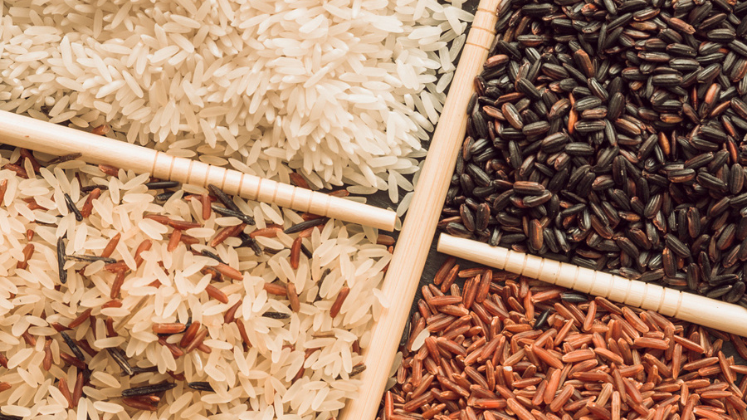A procedure that turns harvested paddy into the polished, ready-to-cook rice consumed worldwide is referred to as rice milling. Understanding this process is vital for producers, manufacturers, and even consumers.
This guide outlines each step of the journey, providing insight into the key processes for improved quality and efficiency.
Why is Rice Milling Important?
This process is essential for transforming raw paddy into a refined, consumable product. It improves rice quality, extends shelf life, and ensures the rice meets food safety standards. Efficient milling also reduces waste and improves yields, which can ultimately boost profitability for rice producers.
Essential Steps in the Rice Milling Process
1. Cleaning
The first step in rice milling is cleaning, which ensures that the raw rice paddy is free from impurities like stones, dirt, straw, and other foreign materials. This is done through various techniques such as filtering, air blowing, and magnetic separation. Proper cleaning is vital to prevent damage to milling equipment and ensure a high-quality final product.
2. Steaming or Parboiling
Depending on the type of rice being produced, the next stage may involve either steaming or parboiling:
- Steaming (Steamed Rice): The paddy is steamed to soften the husk, making it easy to remove while also improving milling efficiency. This process also helps retain more nutrients inside the grain.
- Parboiling (Parboiled Rice): The paddy is soaked, steamed, and then dried to increase the grains’ nutritional value, improve cooking quality, and make the grains firmer, reducing breakage.
3. Hulling
In the hulling stage, the outer husk of the rice is removed to reveal the brown rice kernel. The rice passes through a dehuller, which separates the husk from the edible grain. The result is brown rice, which still contains the bran layer, making it more nutritious but less refined than white rice.
4. Milling (Whitening)
After hulling, the rice is milled to remove the bran and germ, turning it into white rice. Milling can be done using single-stage or multistage machines. Multistage milling is preferable as it reduces the number of broken grains and helps retain more of the rice’s natural nutrients. During this stage, the rice is also polished, giving it its final white form.
5. Polishing
Polishing follows milling and further enhances the rice’s appearance by making it glossy and smooth. This process removes any remaining bran and improves the rice’s shelf life by eliminating moisture-retaining layers. Polished rice not only looks better but also stores better, making it more marketable.
6. Sorting and Grading
Sorting and Grading are essential steps to ensure uniformity and consistency in the final rice product. Broken grains, discoloured kernels, and other defects are removed. Modern sorting techniques often use high-tech sensors and cameras for precision, ensuring that only the highest quality rice reaches the market. Rice is sorted by size, shape, and color.
7. Packaging
Rice is packed in consumer-sized bags or bulk containers. This final step protects it from moisture, pests, and contamination. Proper labeling is important for traceability, brand identification, and compliance with industry standards.
How Meskay & Femtee Trading Company Optimizes Rice Milling
At Meskay & Femtee Trading Company (MFTC), we are committed to improving every stage of the rice milling process, ensuring that producers achieve maximum yield and quality. With our advanced milling technology, we streamline rice processing, from paddy cleaning to packaging, making the process more efficient and less wasteful.
MFTC’s Contribution to Rice Milling Optimization
- Advanced Technology: MFTC utilizes cutting-edge milling technology to minimize broken grains and preserve nutritional value during the milling process.
- Streamlined Milling Operations: From cleaning to packaging, MFTC offers a fully integrated solution that delivers high-quality, consistent rice products.
- Farmer Support: MFTC supports farmers through expert training, advisory services, and agricultural extension programs. We also offer precision farming using Kubota machinery, which enables better crop management and improves grain quality at harvest. These combined efforts help ensure a steady supply of high-quality paddy for efficient milling.
Flowchart: MFTC’s Role in the Rice Milling Process
Here’s an overview of how MFTC optimizes each stage of the rice milling process:
- Cleaning → Thorough cleaning using the latest equipment to remove impurities.
- Steaming/Parboiling → High-efficiency steaming and parboiling systems that enhance nutritional retention and processing quality.
- Hulling → Our dehullers efficiently remove the husk, producing high-quality brown rice.
- Milling → Our multistage milling technology reduces grain breakage and preserves natural nutrients.
- Polishing → Advanced polishing machines give rice a premium glossy finish.
- Sorting & Grading → High-tech sorting machines ensure uniformity in size, shape, and color.
- Packaging → \Secure, high-quality packaging solutions that preserve the freshness and quality of the rice.
Conclusion
Each step in the rice milling process, from cleaning to packaging, is critical to producing rice that meets international quality and nutritional standards. At Meskay & Femtee, we optimize this entire journey through cutting-edge technology, efficient operations, and end-to-end process control.
Our integrated approach ensures better yield, consistent quality, and minimal waste, helping deliver superior rice to markets worldwide.
Contact Meskay & Femtee today to learn how our services can improve your rice milling operations.
FAQs:
-
What is the difference between steaming and parboiling rice?
Steaming helps retain more nutrients within the rice, while parboiling enhances cooking quality and nutrition by making the rice firmer and less prone to breakage.
-
Why is cleaning rice important before milling?
Cleaning removes contaminants, preventing damage to milling equipment and ensuring high-quality rice.
-
How does polishing affect rice quality?
Polishing enhances the rice’s appearance and extends its shelf life by removing moisture-retaining bran layers.
-
What is the role of sorting and grading in rice milling?
Sorting and Grading ensure only the best-quality rice is packaged and sold, maintaining consistency in size, shape, and color.
-
How can modern technology improve the rice milling process?
Modern technology, like MFTC’s multistage milling systems and sorting machines, ensures efficiency, consistency, and reduced waste, enhancing the overall quality of the final rice product.


Leave a Reply